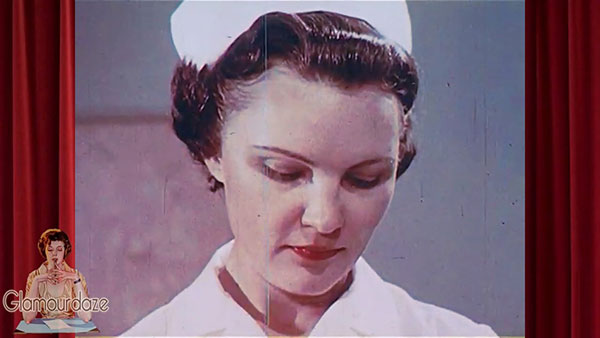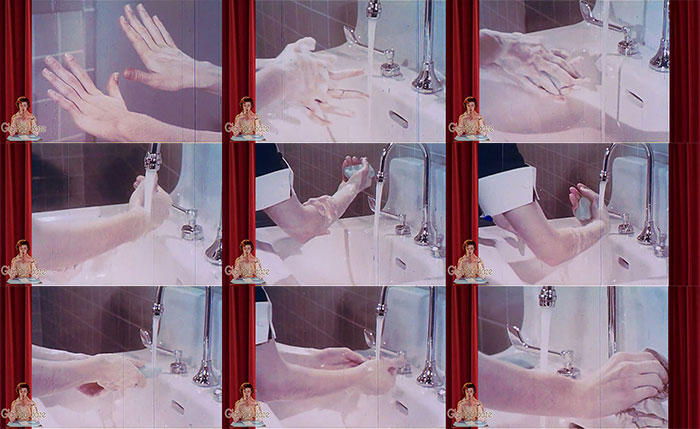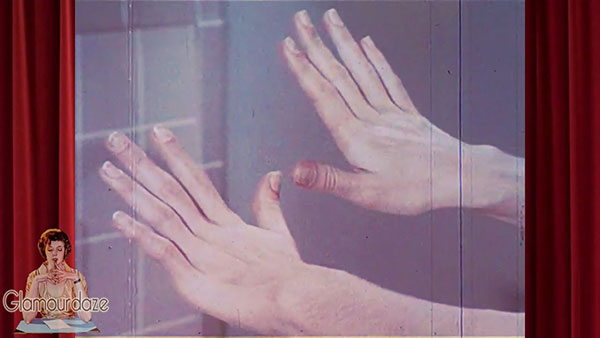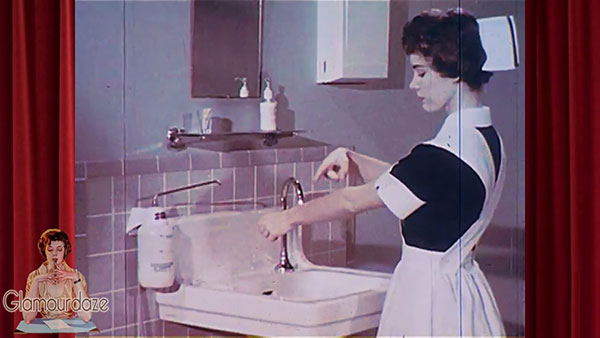Follow these hand washing steps used by medical vintage nurses in the 1960’s, and help yourself and others avoid the dreaded Covid-19 Coronavirus.

In the 1960’s, people were less hysterical about the reality of viruses. Folks still remembered a time before antibiotics.
The current thinking for good hand washing hygiene is a 20 second hand wash, whilst singing ‘Happy birthday’ to yourself – twice !
I don’t know about you but I’m going with this one to two minute technique. Call me paranoid.
Coronavirus | Hand Hygiene in 1961
This is from a film created by the US public health service in 1961. Featuring the hand hygiene as followed in clinical situations by medical nurses. Gallons of water are used, which is not so PC these days, but the principles are worth noting.
Step by Step | Nursing Hand Washing Skills in the 1960’s

Time needed: 2 minutes
How to Wash Your Hands using 1960’s Nursing Skills
- Remove nail polish and hand jewelry ( except wedding band).

- Wet hands thoroughly in running water – warm but not too hot.
- Take soap and work up a generous lather. Use plenty of friction
- Rinse hands allowing water to flow off the sides.
- Soak and soap each forearm, transferring soap from hand to hand.
- Rinse each forearm and soak hands once again.
- Holding soap by the finger tips, rinse and drop in container.
- Rinse hands one more time
- Using a paper towel, turn off the faucet.

The use of face masks was only advised for working directly with infected patients, and using strict surgical protocol.
This is still the recommendation today. Masks are great for keeping out pollution, but not the Coronavirus, or any virus for that matter.
By all accounts, face masks, if used incorrectly, actually increases your chances of picking up a virus. The bug can rest on the outside of the mask. Unless it is removed very carefully, you get it on your fingers and inevitably spread it to your face.
So best to avoid unless you are really well versed in knowing how to use one.
That’s all ! © Glamour Daze
